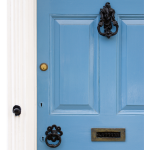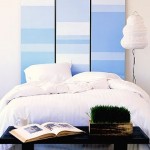 Last time we looked at a simple way to create a unique headboard for your bed using an old wooden paneled door. Today, we’re going to move ahead with this topic (headboards) and give you another idea: old windows.
Last time we looked at a simple way to create a unique headboard for your bed using an old wooden paneled door. Today, we’re going to move ahead with this topic (headboards) and give you another idea: old windows.
For this project you need to once again scour your basement and your attic. Call your friends and ask around. And if you can’t get your hands on any old windows that way, then head out to the mission stores, the junk shops and even the antique malls (though watch out that you don’t pay too much money for somebody’s old window!)
However you (lawfully) acquire them is your business, but once you have them, you’ve got any number of ways to turn them into unique, bold, inspiring and interesting headboards for your bed.
Here are just a few ideas and tips:
Distressed Windows for that “French Country” Look
Take a look at the windows after you’ve finally found them. Take into account the condition of the paint. Is it pealing and flaking off? Or does it just look worn and old? If it’s currently flaking, you might do well to remove it entirely (trust me…leaving it on is just an invitation for it to continue flaking off all over your furniture and floors).
If you decide to remove it entirely, remember to exercise care–understanding that the paint used on the window could be lead-based. Get an N-100 respirator which is available at any hardware or paint store and then either heat the paint up with a heat gun (less than 1,100 degrees F) and remove it that way or mist it with water (to minimize sanding dust) and power sand it off.
If you’re going for that distressed look, don’t worry too much about removing everything down to bare wood. Just get the loose and peeling stuff off and then dust over it with a single coat of RepcoLite’s Hallmark Ceramic Matte Finish. This will produce a very low sheen and it applies and covers very well.
Coat your windows with a single coat of this and then scuff sand them with some 120 grit paper, paying special attention to the edges and corners. Sand them until they look sufficiently distressed and then hang them.
An option for greater durability and washability would be to topcoat them with a single coat of RepcoLite’s Flat Polyurethane Enamel Varnish. This will keep the sheen down to a minimum while providing you with some durability down the road. (This is only recommended over colors since it will yellow over time. If you put it over white windows, they will look “cream” very quickly).
Neutral Windows, Colored Panes
Another way to turn these old windows into a unique headboard is to keep them simple and plain, but use colorful inserts in place of the window glass for interest.
To accomplish this, follow the original steps above to clean and prepare the windows, but rather than painting them with a bright or interesting color, paint them white or cream or some other neutral color. Then head to the craft store and pick up either some heavy duty foam board or some small artist canvas boards (not the standard artist canvas that is stretched over a frame, but artist canvas that is glued to a thin, heavy duty board).
Pick up one of these types of materials and cut it to size to fit the openings where the window glass would normally be.
Once you’ve done that, you’ve got an almost unlimited number of options. You could paint them solid colors–colors that coordinate or accent your room. You could rag paint them or use any number of faux-finishing techniques to create an interesting look on the boards. You could cover them with scraps of fabric or even leftover scraps of wallpaper.
Basically, the point is to cover these inserts with color–whether it’s paint or paper or fabric or even photos of your family. Cover them with somethig interesting and then mount them in the windows.
Experiment with positioning and determine whether or not you want all the window openings filled with color or only several of them.
Other Variations to Consider
Clean the windows up and paint them a solid color and don’t distress it–leave it clean and simple.
Use the windows as picture frames. If there’s no glass, you can mount new glass. If there is glass (and if it’s old and wavy and dirty) LEAVE IT! Mount black and white pictures behind it for a very cool and interesting look.
Fill the window openings with “Stained Glass”. Your local craft store will usually contain small, 8×10 or so pieces of the glass that artisans use for crafting stained glass windows or mosaics. Buy a few sheets of this and either cut it (carefully) yourself or have a hardware store cut it to size. Then mount it in your frame.
Mount the windows and then finish the look by installing curtains around them.





 Last time we looked at a simple way to create a unique headboard for your bed using an old wooden paneled door. Today, we’re going to move ahead with this topic (headboards) and give you another idea: old windows.
Last time we looked at a simple way to create a unique headboard for your bed using an old wooden paneled door. Today, we’re going to move ahead with this topic (headboards) and give you another idea: old windows.